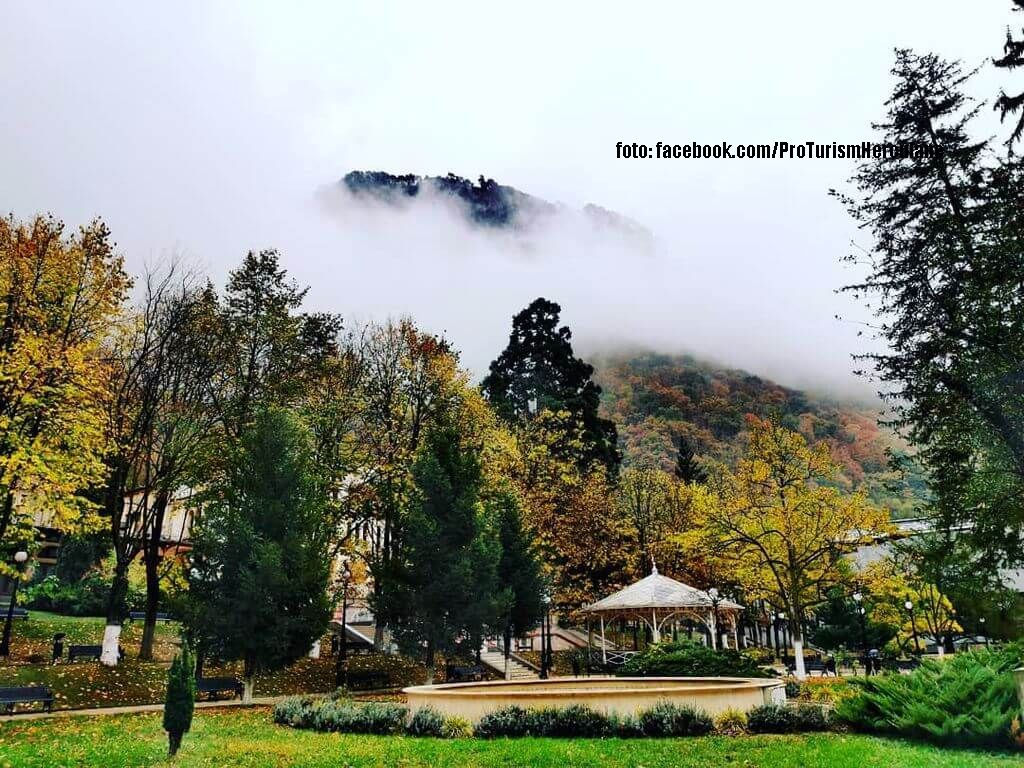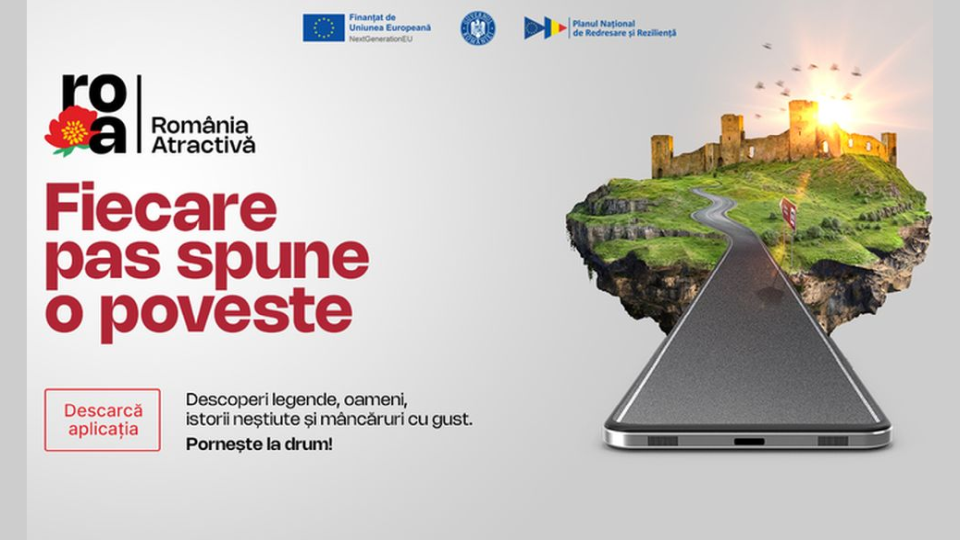Vacation in Romanian Villages
In a century of rushing and speed, an offer for vacationing in a Romanian village, or several for that matter, promise to give you an archaic atmosphere, ancient traditions, amazing scenery, locally sourced cuisine, and especially a welcome change of pace. You can break away from the urban turmoil, you can see traditional craftsmen at work, and you can hear local stories and legends, while reconnecting with nature. Marilena Stoian, president and founder of ANTREC Romania, the National Association for Rural, Ecological, and Cultural Tourism, told us there are many beautiful villages, which preserve or put on display the specificity of that region both in terms of architecture and of style:
“I am thinking of Bukovina, the village of Vama, for instance, or Ciocanesti. Ciocanesti is a museum village on the shores of Bistrita River, where the motifs sown into peasant garb can be found in house decorations, on fences and water wells. The entire village has the same style, but each household has its own individuality. There we have a museum of engraved eggs, and in mid-August they hold a salmon festival. I would recommend tourists move on to Maramures, to the village of Botiza, where they have wooden churches of various ages. There we have the tradition of dying wool in vegetable dies, weaving extraordinary masterpiece carpet hangings. They seem to be creations by a world famous artist. Also in Botiza we can find very tasty traditional foods. They seem heavy dishes, but the local plum brandy guarantees good digestion, giving the tourists the strength to carry on.”
Even though many tourists have heard of and visit the two great tourism areas of the country, Bukovina and Maramures, there are many destinations in the south of Romania. Except for the exceptional area that is the Danube Delta, Marilena Stoian told us about destinations such as Giurgiu and Calarasi, where new pensions and tourist trails have cropped up:
“There is a village of Ciocanesti in Calarasi County too, close to the Danube, where they have eco-tourism trails. They also have cycling trails along the Danube. Speaking of the Danube, I would mention the village of Eselnita, in the Danube Gorges. The Danube Cauldrons are an extraordinary attraction, and lately it has been attracting more and more tourists. They have rowboat and larger ship trips on the river. Fish is eaten everywhere, of course. You can visit some special villages too, with populations of Czechs or Slovaks. There are villages which take advantage of the Mediterranean climate to grow figs, and their fig preserve is famous. Since we are in the south, I would mention Tismana, one of the most beautiful villages in Romania. They have an extraordinary monastery there. In the summer, the trips through the forests are wonderful. Starting there, we can go on to Pestisani and Hobita, the village that is the birthplace of sculptor Constantin Brancusi. Starting from there, we can go on to visit some of his works.”
Many of the tourists who have visited Romania were stunned by the local craftsmen and what they make. The best place to get to know them is at their homes, in their villages. In order to discover the authentic face of Romania, you can also head to Transylvania. You can always have a hearty brunch in the Saxon fortified cities of Crit or Viscri. In the latter they have a parochial house turned B&B, where you can take part in arts and crafts, getting to know the original local cuisine. You then should head to the fortified cities of Sighisoara, Rupea, Viscri, and Saschiz.
We asked Marilena Stoian which village she feels closest to:
“In the last 30 years I grew very close to Bran-Moeciu, and I love the village of Magura, in Moeciu commune, in Brasov County. It is a village on top of some hills, on one side you can see the Piatra Craiului mountain range, and on the other you can see the Bucegi range, it is like an amphitheater. There are lots of forests, which you can tackle on foot, by bicycle, or in winter in horse-drawn sleighs. A lot of times, when I travel abroad and miss home, these are the places that I think of first.”
Since we are around the winter holidays, in the area of Marginimea Sibiului, in the Targu Neamt area, there are lots of B&Bs with special Christmas and New Year packages. You can witness local caroling, you can go by horse-drawn sleigh, and can enjoy the local cuisine. The offer is excellent during the holidays, and Marilena Stoian told us about it:
“In Romanian villages, in the 21st century, many houses have a Jacuzzi or spas, with only a few of them showcasing the ancient life of the village. Close to Bucharest, in Snagov, we have Gradina Vlahia, in Prahova we have the Dacian Farm, and in Alba County we have many more. Those are targeted at people who want something truly special. You are eagerly awaited in Romanian villages. B&B have their gates wide open, hosts cant wait to have you over during the holidays, on Christmas or New Year, but also all throughout the year, because each season has its charm.”
The invitation has been launched. See you next time with a new destination.

Daniel Onea, 28.11.2019, 14:30
In a century of rushing and speed, an offer for vacationing in a Romanian village, or several for that matter, promise to give you an archaic atmosphere, ancient traditions, amazing scenery, locally sourced cuisine, and especially a welcome change of pace. You can break away from the urban turmoil, you can see traditional craftsmen at work, and you can hear local stories and legends, while reconnecting with nature. Marilena Stoian, president and founder of ANTREC Romania, the National Association for Rural, Ecological, and Cultural Tourism, told us there are many beautiful villages, which preserve or put on display the specificity of that region both in terms of architecture and of style:
“I am thinking of Bukovina, the village of Vama, for instance, or Ciocanesti. Ciocanesti is a museum village on the shores of Bistrita River, where the motifs sown into peasant garb can be found in house decorations, on fences and water wells. The entire village has the same style, but each household has its own individuality. There we have a museum of engraved eggs, and in mid-August they hold a salmon festival. I would recommend tourists move on to Maramures, to the village of Botiza, where they have wooden churches of various ages. There we have the tradition of dying wool in vegetable dies, weaving extraordinary masterpiece carpet hangings. They seem to be creations by a world famous artist. Also in Botiza we can find very tasty traditional foods. They seem heavy dishes, but the local plum brandy guarantees good digestion, giving the tourists the strength to carry on.”
Even though many tourists have heard of and visit the two great tourism areas of the country, Bukovina and Maramures, there are many destinations in the south of Romania. Except for the exceptional area that is the Danube Delta, Marilena Stoian told us about destinations such as Giurgiu and Calarasi, where new pensions and tourist trails have cropped up:
“There is a village of Ciocanesti in Calarasi County too, close to the Danube, where they have eco-tourism trails. They also have cycling trails along the Danube. Speaking of the Danube, I would mention the village of Eselnita, in the Danube Gorges. The Danube Cauldrons are an extraordinary attraction, and lately it has been attracting more and more tourists. They have rowboat and larger ship trips on the river. Fish is eaten everywhere, of course. You can visit some special villages too, with populations of Czechs or Slovaks. There are villages which take advantage of the Mediterranean climate to grow figs, and their fig preserve is famous. Since we are in the south, I would mention Tismana, one of the most beautiful villages in Romania. They have an extraordinary monastery there. In the summer, the trips through the forests are wonderful. Starting there, we can go on to Pestisani and Hobita, the village that is the birthplace of sculptor Constantin Brancusi. Starting from there, we can go on to visit some of his works.”
Many of the tourists who have visited Romania were stunned by the local craftsmen and what they make. The best place to get to know them is at their homes, in their villages. In order to discover the authentic face of Romania, you can also head to Transylvania. You can always have a hearty brunch in the Saxon fortified cities of Crit or Viscri. In the latter they have a parochial house turned B&B, where you can take part in arts and crafts, getting to know the original local cuisine. You then should head to the fortified cities of Sighisoara, Rupea, Viscri, and Saschiz.
We asked Marilena Stoian which village she feels closest to:
“In the last 30 years I grew very close to Bran-Moeciu, and I love the village of Magura, in Moeciu commune, in Brasov County. It is a village on top of some hills, on one side you can see the Piatra Craiului mountain range, and on the other you can see the Bucegi range, it is like an amphitheater. There are lots of forests, which you can tackle on foot, by bicycle, or in winter in horse-drawn sleighs. A lot of times, when I travel abroad and miss home, these are the places that I think of first.”
Since we are around the winter holidays, in the area of Marginimea Sibiului, in the Targu Neamt area, there are lots of B&Bs with special Christmas and New Year packages. You can witness local caroling, you can go by horse-drawn sleigh, and can enjoy the local cuisine. The offer is excellent during the holidays, and Marilena Stoian told us about it:
“In Romanian villages, in the 21st century, many houses have a Jacuzzi or spas, with only a few of them showcasing the ancient life of the village. Close to Bucharest, in Snagov, we have Gradina Vlahia, in Prahova we have the Dacian Farm, and in Alba County we have many more. Those are targeted at people who want something truly special. You are eagerly awaited in Romanian villages. B&B have their gates wide open, hosts cant wait to have you over during the holidays, on Christmas or New Year, but also all throughout the year, because each season has its charm.”
The invitation has been launched. See you next time with a new destination.






























